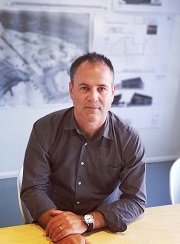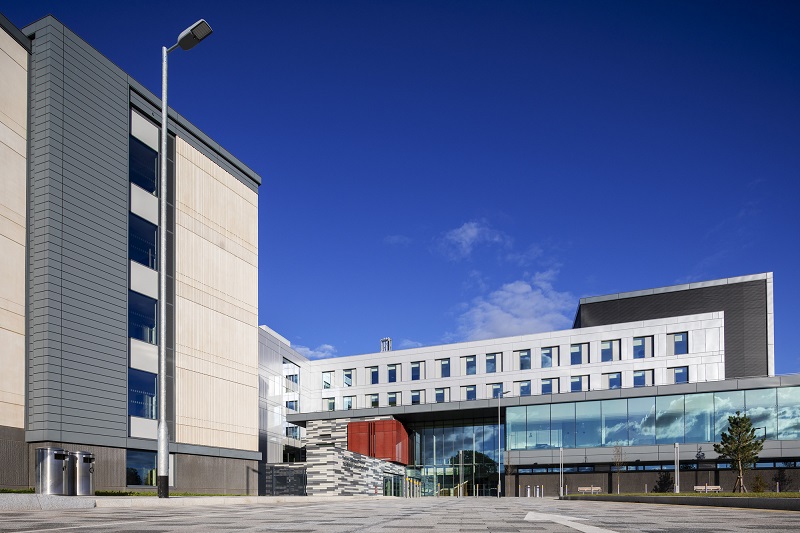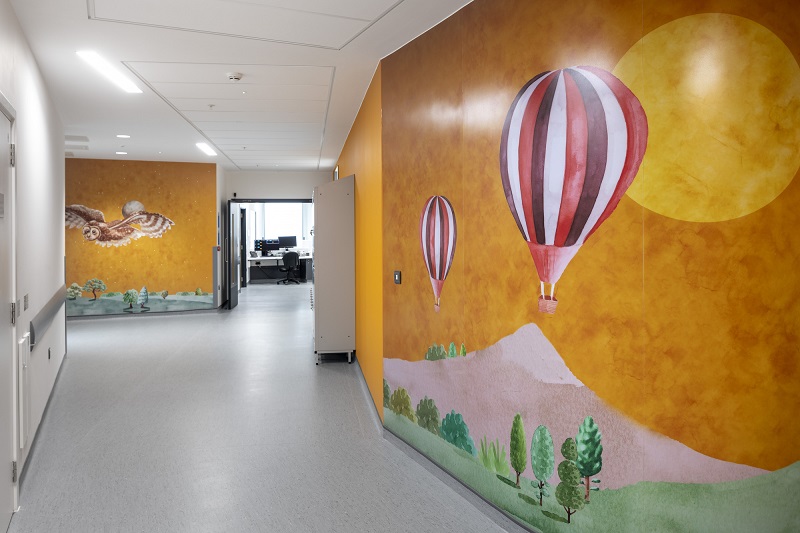Last spring multi-disciplinary teams across the country mobilised to deliver COVID-19 field hospitals in just a matter of days.
Compare this to traditional hospital developments – which can take more than a decade to deliver – and if the pandemic has taught us anything it is that things need to change.
“Naturally, the planning, development, approval and procurement processes for multi-million pound acute hospitals are complex,” explains Nick Fairham, architect director at global architecture practice at BDP’s Bristol studio.
“But it is now recognised that streamlining and prioritising the approval process, in particular, can save years, and millions of pounds.
“It means suppliers can plan workloads, agree design approaches, and maintain greater continuity of people and expertise, not to mention the cost savings – a year’s delay on a £300m project, for example, could mean £12m lost to inflation.
“That’s a shortfall that has to be recovered – and you have to start taking things out.
“So, paving the way for efficient and timely processes at the outset is critical.”
Fairham was part of the team behind the development of The Grange University Hospital in Gwent; a project that took 13 years to bring to fruition.
Previously known as the Specialist and Critical Care Centre, the facility is the centrepiece of a new model of healthcare delivery, serving over 600,000 people and dealing with all major emergencies, as well as treating and caring for those needing complex emergency or critical care.
It is now recognised that streamlining and prioritising the approval process, in particular, can save years, and millions of pounds
It has 471 beds and is home to more than 40 specialist services, with a helipad for patients who arrive by air ambulance.
Fairham said: “As has been well documented in the media, hospitals up and down the country, including The Grange University Hospital, have been faced with significant challenges as the COVID pandemic has worsened this winter.
“However, despite these, incredible treatment and care is being delivered hour after hour with the facility’s built-in flexibility key to its response.”
As one of a handful of people involved in the design and construction of the facility from the beginning to the end of its 13-year journey, Fairham reflects on what the team have learned along the way and how this is fundamentally changing future hospital construction projects.
“Firstly, it’s about time frames,” he says.

Nick Fairham
“A decade or more for the design, development, and delivery of a major critical care hospital was to be expected when we started this work.
“Flexibility in healthcare design is fundamental to ensuring a hospital can evolve with advances in treatment and care, adapting to a population’s changing healthcare needs, and enabling continuous improvement and system transformation.
“Flexibility to adapt to design, technology and construction changes over the course of a decade is also hugely important.”
Take energy supply, for example.
At the start of the project, biomass boilers were the sustainable solution of choice.
But, by the time the hospital was being built, combined heat and power was the way forward, and installing biomass would have been practically prehistoric.
Flexibility in healthcare design is fundamental to ensuring a hospital can evolve with advances in treatment and care, adapting to a population’s changing healthcare needs, and enabling continuous improvement and system transformation
At the other end of the scale, light fittings were switched to far-more-energy-efficient LEDs, which had had become commercially viable during the lifetime of the project.
“Working for an ‘expert client’ and as part of a supplier framework are two aspects that contribute greatly to success in terms of reduced timescales and keeping budgets on track,” explains Fairham.
“The Aneurin Bevan University Health Board, and the NHS more broadly, have significantly invested in skills so that they are expert customers buying expert suppliers.
“The framework is fundamental to that expertise, ensuring teams of architects and designers, project managers, construction engineers, and contractors are working together from the outset.
“At The Grange it allowed for expert contractor, Laing O’Rourke, to bring its experience of building hospitals across the UK into the project, rather than each stage happening in isolation with a contractor being brought in too late to inform designs.

Contractor, Laing O'Rourke used offsite and Modern Methods of Construction to help inform and develop the design
“Conversations and knowledge sharing took place much earlier, too.
“Laing O’Rourke’s expertise in offsite manufacturing and Modern Methods of Construction (MMC), for example, helped inform and develop our design.
“So, the large windows that flood patient bedrooms with natural light – proven to have a positive impact on wellbeing and recovery – were made even larger than our original designs following the contractor’s suggestion to reduce the weight of the wall components, allowing better transportation and more-efficient logistics on site.”
At the outset of the project MMC was in its formative stages and every element was effectively a prototype.
But Laing O’Rourke brought a great deal of learning from the delivery of two other major hospitals at Alderhey and Dumfries & Galloway.
Fairham said: “From reducing material waste and construction traffic on site, right down to the order in which to load and unload lorries; offsite manufacturing of large component parts of the hospital allowed for unprecedented levels of efficiency and precision.”
And, as shown from the Coronavirus response, which involved architects, contractors, product manufacturers, and the Armed Forces, as well as health and care staff; involving the right people is crucial.
“As well as bringing contractors and suppliers together right at the outset, delivering sufficient ‘corporate memory’ to stay the course of the project, bringing in staff and clinicians early is also crucial”, said Fairham.
From reducing material waste and construction traffic on site, right down to the order in which to load and unload lorries; offsite manufacturing of large component parts of the hospital allowed for unprecedented levels of efficiency and precision
“The decision to design in storage at every pod of six single-patient rooms, rather than at the ends of long corridors, was informed by nursing staff who pointed out crucial time lost to gathering medication, equipment, and supplies.
“And helping teams to prepare for transition was also vital.
“The Grange University Hospital is at the centre of a fully-transformed healthcare system, so as well as working in a new building, teams were working with new operational procedures and models of care.

Consultation with staff and patients ensures the hospital operates efficiently and enhances the health and wellbeing of all occupants
“We created a website to make the space available virtually in advance, allowing staff to carry out training and familiarisation long before they moved in.”
And the end result is a new facility that opened four months ahead of schedule and under budget.
Careful modelling of staff and patient flows in the design phase allows for early streaming to a point of care and access to timely and expert services. And this is supported by dedicated circulation systems for front-of-house and back-of-house services, enhancing patient privacy.
The hospital is also designed to be flexible, adaptable and expandable, with the use of universal rooms allowing operational flexibility and blurring of departmental boundaries to deal with changing demand.
The site takes advantage of its landscaped setting, offering views across the surrounding countryside and access to therapeutic spaces to promote healing and wellness.
And it offers a highly-connected environment with high-quality staff spaces to attract and retain the best workforce.
Fairham concludes: “It’s been a privilege to see this one through from start to finish and now to watch its life as a hospital unfold – which, let’s face it, is the closest any of us ideally wants to get to a specialist critical care centre, no matter how good it is.”




